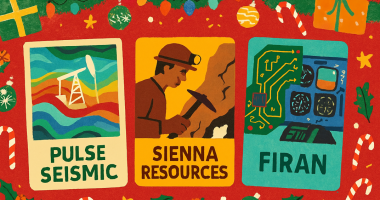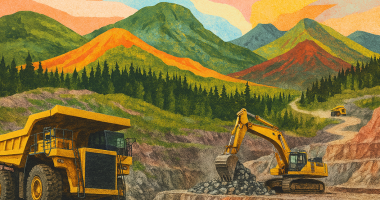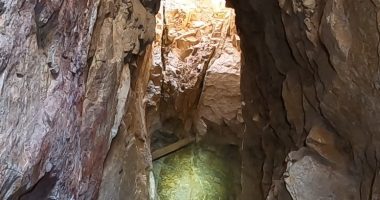ATEX Resources’ management team has a history of discovering major mineral deposits in South America, including the La Fortuna copper-gold deposit and the Pascua, Volcan and Maricunga gold deposits in Chile, to name a few.
Most recently, the company completed a third option payment on its Valeriano project, leaving just two more payments to earn 100 per cent interest on the project and is about to commence drilling at its Valeriano project in Chile
Joining us today to talk all things ATEX is CEO and Director Raymond Jannas, thanks for making time for us today.
TMH: We understand that you have recently returned from the site, how are preparations for drilling progressing?
RJ: Fortunately, we are progressing well. It was a terrible winter this year. A lot of snow falls, and in Chile, it’s high mountains where we are close to 3,900 meters above sea level, up to about 4,400, and the snow accumulates. Unfortunately, most of our roads are on the west and southwest side of the hills, and that’s where the wind blows and just accumulates a lot of snow. So, it’s been hard to get to the project, but we’re there, and we’re about to start drilling tomorrow or the day after tomorrow.
TMH: I understand you’re one of the only companies in South America that are utilizing s directional drilling to advance your project. Why is this a big deal for the company?
RJ: Well, it is a big deal because it has a lot of different points that upgrade our project timing, I’d say. Well, first of all, it’s a system that we go down about 800 meters, and from there, we can drill in all directions. The first 600 to 800 meters do not have economic mineralization. It comes below that. So, with one hole and with the other minerals, you can get a lot of drilling with less drilling. You get to more sites. It’s more efficient, has better timing, and has less effect on the environment because you have fewer pads. So, it’s a combination that really helps us.
TMH: Can you discuss the strategic location of Valeriano in what appears to be a newly developing copper district?
RJ: Okay. Valeriano is located in North Central Chile, about 600 kilometres to the north of Santiago, the capital. It’s in the high Andes, as I mentioned before, between 3,900-4,400 meters above sea level, and it’s very interesting because our project is immediately south, five kilometres south of the El Encierro project, a Joint Venture between Antofagasta and Barrick and they had come up with a 550 million ton inferred resource with 0.79% copper equivalent within a 2.2 billion amount of mineralized material in the area, and we are immediately south, and Valeriano project is showing the very exciting type of results, and we think that this is going to be a tremendous district in the future.
TMH: In September, the company announced it completed a third option payment, moving one step closer to owning 100 per cent of the Valeriano project. Can you take us through the outstanding steps to 100% ownership of the project?
RJ: We have two payments left. One in late August or the end of August of 2023. That’s $3.5 million dollars, which also implies that we have to complete 8,000 meters of drilling, which we will have over-completed by that time. Then an investment of $10 million dollars, which we will also have completed. There’s another payment in 2025, late August, that’s another $8 million and $5 million commitment in more exploration work, and I think we’ll have that more exploration work done prior to that date. So I think everything’s going in the right direction to getting 100% of the project. We earned 49% at the end of August 2023, and we earn 100% at the latest in August 2025.
TMH: How are the samples you sent for metallurgical test work progressing, when are you expecting results from this?
RJ: Well, we sent two samples out for metallurgical testing, and it’s very interesting because the mineralization at the porphyry zone is dominated by chalcopyrite with a bit of bornite and very low pyrite. So we think the results are going to be very positive, and we know that there are very few detrimental elements. Unfortunately, I can’t tell you the details because we haven’t gotten them and we’re expecting them in 10 days more.
TMH: Projects like this involve a lot of work when raising capital. Is there one investor that has really believed in ATEX and what the company is trying to achieve?
RJ: We do have some important investors in the group. I’d like to mention probably my friend who’s Pierre Lassonde. Why I know Pierre with Craig Nelson, who’s the chairman of the board. Pierre formed the Metallica resources in 1995 apart and brought Craig Nelson as a CEO, and I joined at that time as VP Exploration. So I know Pierre well. Craig is also a very good friend also of Pierre since that time, it was not easy to convince him to invest in Atex because he has decided not to invest in exploration projects, but when we brought him this idea and what we thought it could turn into a very early stage. He said, you know, you excited me on the project side, and I like the management, I’ll come in and having Pierre behind us backing us on the last two raises has been important, and it will be and continue to be in future raises.
TMH: Is there anything else you’d like to mention that we haven’t touched on that you would like investors to know?
RJ: Well, I think there are a couple of things that are important. One is that our program that we’re starting to drill now is going to be between 10,000 and 20,000 meters. It’s going to focus on the extensions of the high-grade plus 1% copper that we have defined in drill holes 17 and 14 toward the northeast and towards the southwest. We already understand geology a lot better, and we think that this could be a tremendous extension. This is a deep porphyry, so it’s going to be an underground operation. So we need continuity of high grade to assure of potential underground type operation, let’s say Block Caving. So that’s one aspect, but the other aspect is that we already have an idea that there’s an 800 by 850 meter planned view of what the whole body could be there up to now and more importantly, the drill holes have proved that it extends for a 1,000 meters in depth. So we’re going to start drilling also to see the exact extent of our porphyry system. So it’s going to be a very exciting program. We’re not going to reach a tremendous resource level yet, but we’re going to really have a good understanding of our project.
Thanks again for joining us and answering our questions, Raymond.
We’ve been speaking with Raymond Jannas, CEO and Director of ATEX Resources. You can follow the company by visiting the company’s website, atexresources.com, or check them out on the TSXV, where they trade under the ticker symbol ATX.
A special thanks to our viewers for joining us today…I’m Brieanna McCutcheon for The Market Herald. Thanks again for watching Top Line, and we’ll see you soon.
FULL DISCLOSURE: This is a paid article produced by The Market Herald.



